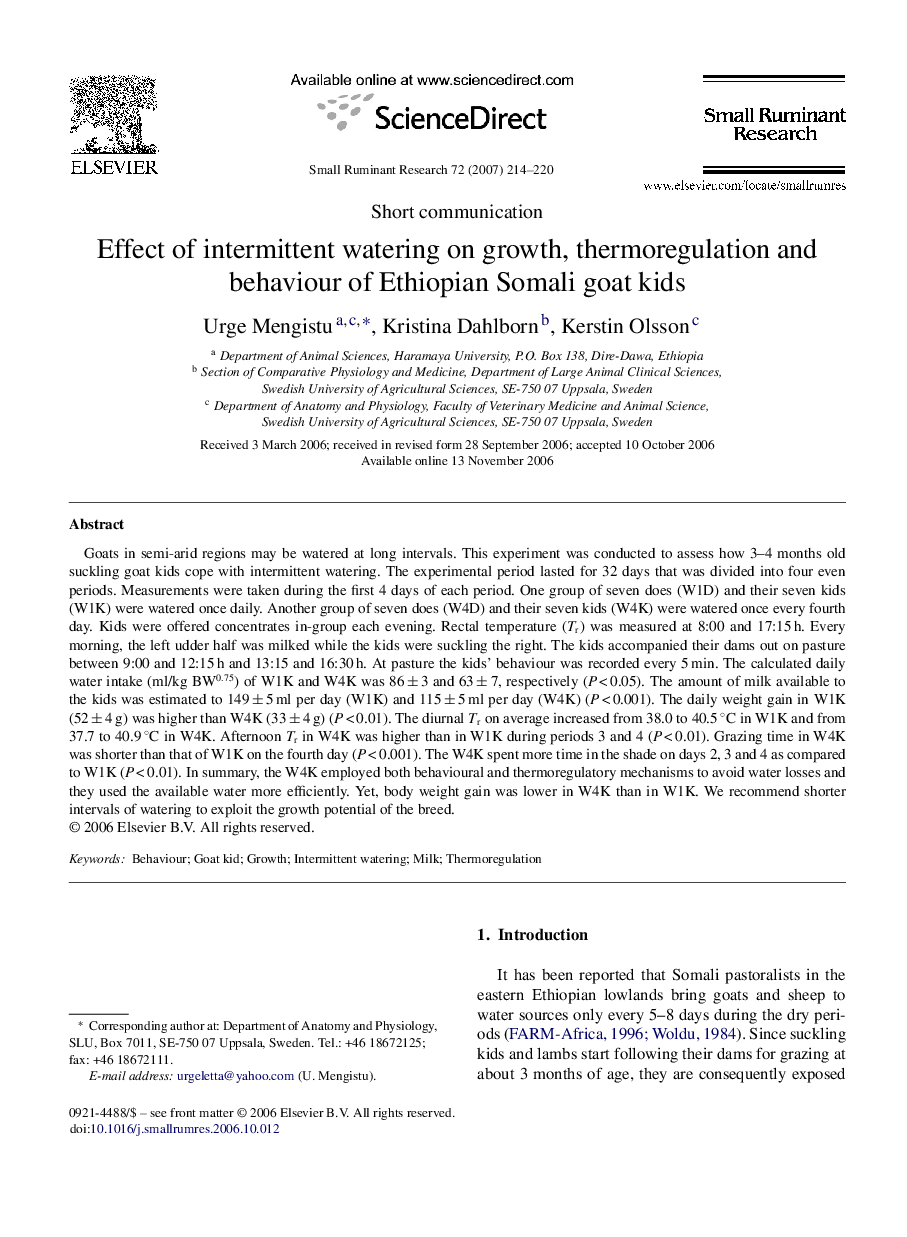| کد مقاله | کد نشریه | سال انتشار | مقاله انگلیسی | نسخه تمام متن |
|---|---|---|---|---|
| 2458270 | 1554420 | 2007 | 7 صفحه PDF | دانلود رایگان |

Goats in semi-arid regions may be watered at long intervals. This experiment was conducted to assess how 3–4 months old suckling goat kids cope with intermittent watering. The experimental period lasted for 32 days that was divided into four even periods. Measurements were taken during the first 4 days of each period. One group of seven does (W1D) and their seven kids (W1K) were watered once daily. Another group of seven does (W4D) and their seven kids (W4K) were watered once every fourth day. Kids were offered concentrates in-group each evening. Rectal temperature (Tr) was measured at 8:00 and 17:15 h. Every morning, the left udder half was milked while the kids were suckling the right. The kids accompanied their dams out on pasture between 9:00 and 12:15 h and 13:15 and 16:30 h. At pasture the kids’ behaviour was recorded every 5 min. The calculated daily water intake (ml/kg BW0.75) of W1K and W4K was 86 ± 3 and 63 ± 7, respectively (P < 0.05). The amount of milk available to the kids was estimated to 149 ± 5 ml per day (W1K) and 115 ± 5 ml per day (W4K) (P < 0.001). The daily weight gain in W1K (52 ± 4 g) was higher than W4K (33 ± 4 g) (P < 0.01). The diurnal Tr on average increased from 38.0 to 40.5 °C in W1K and from 37.7 to 40.9 °C in W4K. Afternoon Tr in W4K was higher than in W1K during periods 3 and 4 (P < 0.01). Grazing time in W4K was shorter than that of W1K on the fourth day (P < 0.001). The W4K spent more time in the shade on days 2, 3 and 4 as compared to W1K (P < 0.01). In summary, the W4K employed both behavioural and thermoregulatory mechanisms to avoid water losses and they used the available water more efficiently. Yet, body weight gain was lower in W4K than in W1K. We recommend shorter intervals of watering to exploit the growth potential of the breed.
Journal: Small Ruminant Research - Volume 72, Issues 2–3, October 2007, Pages 214–220